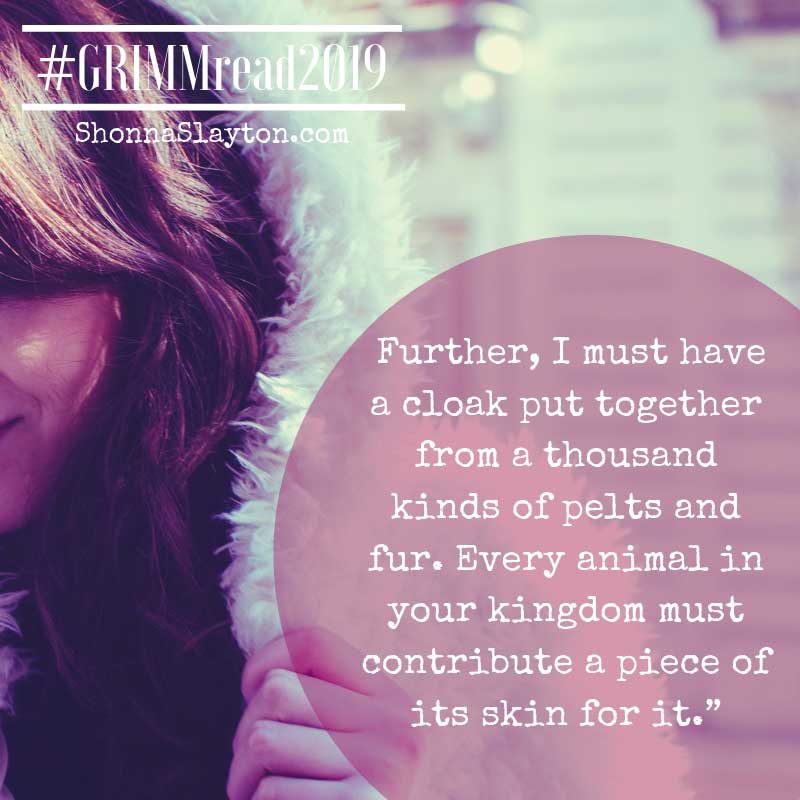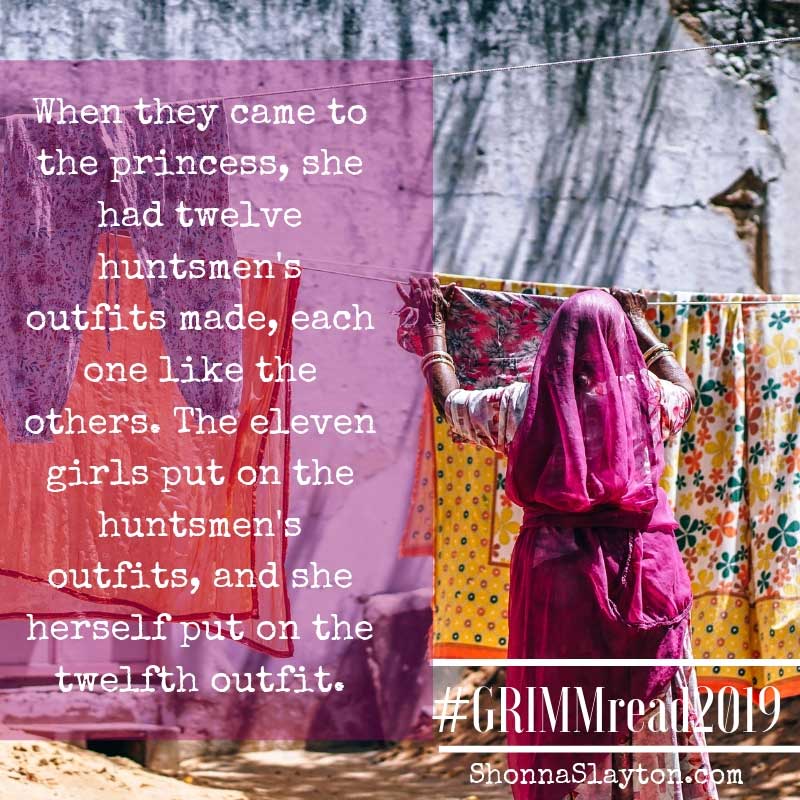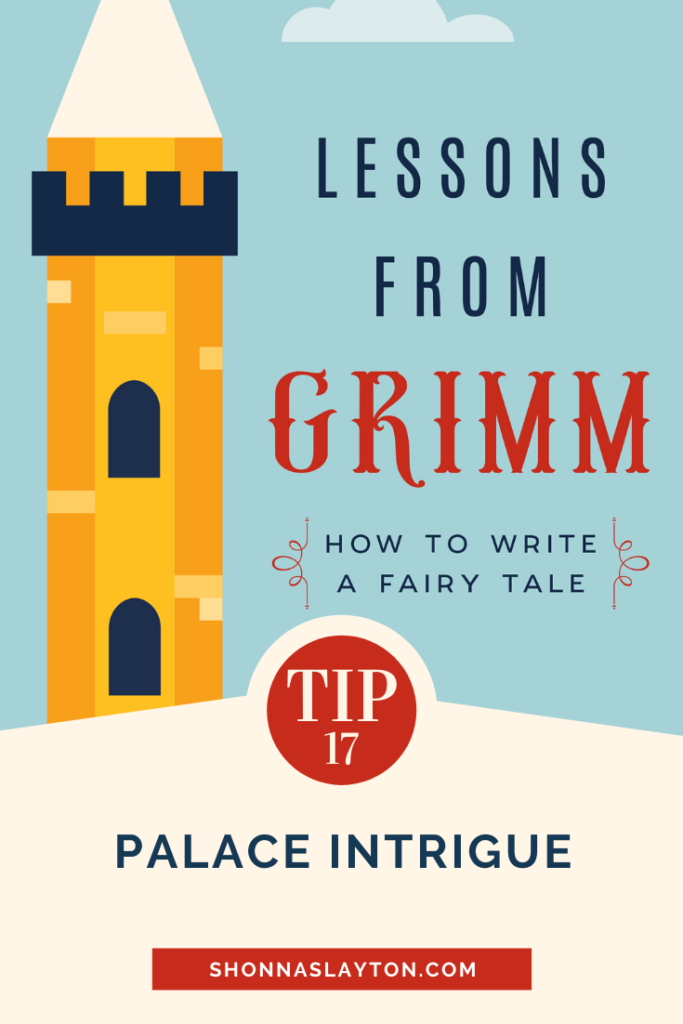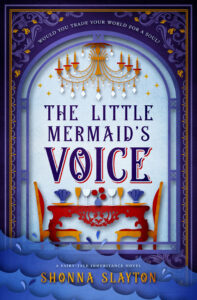The most popular fairy tales seem to involve royalty and romance with a good dose of palace intrigue. (Think of the most famous tales: Cinderella, Sleeping Beauty, Snow White)
This week, two of the Grimm’s Fairy tales we read are firmly set in this royalty genre: All-Kinds-of-Fur (Allerleirauh) and The Twelve Huntsmen. Although very different stories, they share several commonalities:
- Both main characters are princesses.
- Both travel from one kingdom to another.
- Both act on their strong morals.
- Both make plans to get what they want.
- Both wear a disguise that gets them into the palace to work.
- Both make moves to get close to the king.
- Both are strong, clever female characters (who said fairy-tale princesses were weak?)
- Both are discovered because they are wearing a ring given to them by the king.
- Both get their happily-ever-after.

All-Kinds-of-Fur, also called Allerleirauh after the name given to the princess, is not as well known a tale, mostly, I would guess, because in the first plot point the princess runs away from her widower father who is planning to marry her. (!) Yeah, that’s not a good way to begin a beloved tale or make for a good bedtime story. Readers like to put themselves in the shoes of the main character, and that’s not something readers want to imagine. Easily rewritten, a modern fairy-tale writer could have the princess on the run to escape another badly-matched wedding.

In The Twelve Huntsmen, our princess is on the move to another kingdom to remind her betrothed prince-now-king that he was in love with her and to honor his commitment to marry her despite agreeing on his father’s death bed to marry his father’s choice for him.
The princess in All-Kinds-of-Fur hides out in the palace kitchen wearing a fur coat from 1000 different animals and her skin covered in soot. Somehow, they still let her near the food where she cooks up some delicious soup for the king. She also sneaks off to clean herself up and wear one of her beautiful gold, silver, or bright-as-the-stars gowns that she’d brought with her in a nutshell. All glammed up, she attends the feast/ball and attracts the attention of the king. When she keeps disappearing each night (Cinderella anyone?) he slips a ring onto her finger to mark her as the mysterious girl. Later, after she quickly resumes her disguise, she misses covering up that one finger and the king sees her and knows who she is. They marry.
Our huntsman princess dresses up as a huntsman along with eleven other girls who look similar to her and she sets off to hang out with the king. I’m not sure why she comes up with this plan to have eleven other girls who look like her participate in the disguise. So she’d blend in more? Increase her chances of getting hired on? Moral support? Witnesses? Or was it because she knew there was a cunning lion in residence who would identify her as being a female, and therefore needed these other girls with her so the lion couldn’t single her out so easily? At any rate, when our princess learns the other princess is about to arrive in the kingdom, she faints. In the process of helping the “huntsman” up, the king pulls her glove off. He then sees the ring he’d given his true love and is reminded of his commitment. They marry.
I’m a big fan of royalty fairy tales. I suppose it’s the escapism. The romance. The ball gowns. The stakes are higher when there is a prince and a princess versus a shopkeeper and a candle-maker. Often duty is involved, as in the case with The Twelve Huntsmen, and when love wins out, the happily ever after is sweeter.




